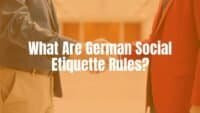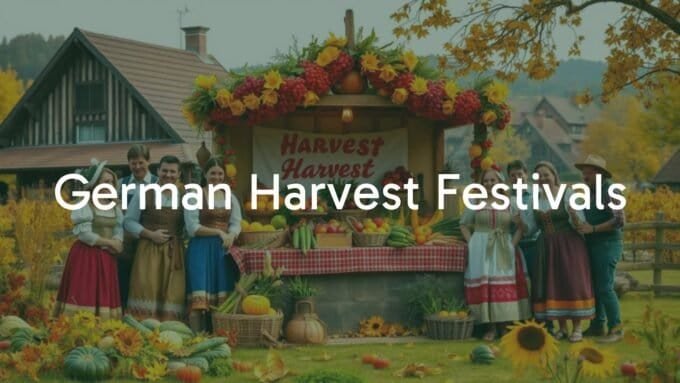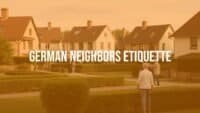Carnival in Germany is far more than a party; it is a lively, long-standing tradition that turns cities into places of joy, humor, and playful rule-breaking. Names and customs vary-“Karneval” in the Rhineland, “Fasching” in Bavaria, and “Fastnacht” in the southwest-but the core is the same: a colorful burst of fun before Lent. It’s the moment when many Germans set aside routine and enjoy bold costumes, satire, and shared laughter. This guide looks at the history, regional styles, key dates, and the best cities to enjoy this unforgettable “fifth season.”

What is Carnival in Germany?
Carnival in Germany is a pre-Lenten festival, a time to celebrate before Ash Wednesday ushers in fasting and reflection. Daily life takes a back seat as towns fill with parades, music, dancing, and costumes. It is not a single, uniform event; each region has its own traditions and names. Whether called Karneval, Fasching, or Fastnacht, the idea is the same: shake off winter and come together for cheerful fun.
This season often flips social roles for laughs. Jokes, satire, and light rebellion take center stage. People wear costumes-from fantasy figures to political spoofs-and the streets become informal stages for singing, dancing, and chance meetings. Strangers often act like friends, and in Cologne you may even get a friendly cheek kiss, called a “Bützchen.”
Why is Carnival called the ‘fifth season’?
“Fifth season” is a common nickname, especially in North Rhine-Westphalia and Rhineland-Palatinate. It means Carnival is not just a holiday but its own special time of year with its own calendar and mood, changing daily life in many cities.
It starts as early as November 11 at 11:11 a.m. and builds slowly to the peak in late winter. Carnival clubs hold “Sitzungen”-shows with speeches, dance, and comedy-to keep the spirit alive through the dark months. This long lead-up and deep local involvement make Carnival a separate, much-anticipated season in the German year.
How did Carnival traditions develop in Germany?
Carnival’s roots go back to ancient festivals that aimed to “drive out winter.” Over time these customs mixed with Christian practices tied to Lent.
The modern Rhenish style, with parades and sharp satire, took shape in the 19th century. A key moment was the first Shrove Monday procession in Cologne in 1823. During Prussian and French rule, Carnival in the Rhineland became a subtle outlet for mocking authorities. This history helped shape the strong satirical tone still seen today. Elsewhere, local styles grew: Munich’s formal Fasching balls and the masked, folklore-based Alemannic Fastnacht show how each area reflects its own past.
When do Carnival celebrations take place in German cities?
The loudest Carnival days arrive in late winter, but the “fifth season” runs for months. The whole cycle follows the Christian calendar and ends right before Ash Wednesday.
Long before the big parades, people plan costumes and floats and attend indoor events that keep the mood high. This long run-up shows how deeply Carnival is woven into local life.
What are the key dates on the Carnival calendar?
Several dates mark the path of the “fifth season.” The official start is November 11 at 11:11 a.m., often with formal openings led by Carnival groups.
The real street fun begins after New Year. The most intense week is the run-up to Ash Wednesday, often called the “crazy days.” It starts with Weiberfastnacht (Women’s Carnival) on Thursday, then Carnival Friday, Saturday, Sunday, and the main event, Rose Monday (Rosenmontag). Violet Tuesday (Veilchendienstag) wraps things up before Ash Wednesday.
For the 2025/2026 season: the session opens on Tuesday, November 11, 2025. The main street week starts on Thursday, February 12, 2026 (Weiberfastnacht). Rose Monday is February 16, 2026, and the season ends on Violet Tuesday, February 17, 2026. These are important dates if you want the full experience.
How does the Carnival season begin and end?
The season begins right on time: November 11 at 11:11 a.m. In Mainz, for example, officials read “silly laws” from the Osteiner Hof balcony while crowds cheer. After a pause for Advent and Christmas, the energy returns after New Year.
The peak arrives in the week before Ash Wednesday. Events move from indoor “Sitzungen” to street parties and parades. The last act is on Violet Tuesday. Many places end by burning a straw doll called the “Nubbel,” a ritual that closes the fun and clears the slate before Lent begins on Ash Wednesday.
How does Carnival differ across German regions?
Carnival in Germany is a mix of many local styles. While the idea of pre-Lenten fun is shared, the names, customs, and mood differ widely. This variety reflects Germany’s history and culture.
Knowing these differences helps you enjoy the full range of Carnival. The Rhineland offers loud, satirical parades, while the Alemannic south is steeped in folklore and masked figures. Each region gives a distinct, memorable take on the season.
Rhenish Carnival: customs and atmosphere
The Rhenish Carnival, common in North Rhine-Westphalia and Rhineland-Palatinate, is widely seen as the most famous and lavish. Cologne, Düsseldorf, and Mainz lead the way with strong energy, biting humor, and huge parades. Crowds sing and dance together in a friendly, open mood.
Key traditions include Weiberfastnacht on the Thursday before Ash Wednesday, when women “take charge,” even cutting men’s ties for fun. “Sitzungen”-indoor shows with dance, comedy, and satire-run all season. The main highlight is the “Rosenmontagsumzug” (Rose Monday parade), a giant line of floats, bands, and costumed groups that shower the crowds with sweets and flowers. Local calls matter: “Alaaf!” in Cologne, Bonn, and Aachen; “Helau!” in Düsseldorf and Mainz. People take these differences seriously in a playful city rivalry.
Alemannic Fastnacht: unique features
The Alemannic or Swabian-Alemannic Fastnacht in Baden-Württemberg and parts of Bavaria feels older and more mystical. It leans on folklore and the chase to drive away winter spirits. “Fastnacht” refers to the night before fasting.
Hand-carved wooden masks and classic costumes are a signature. Witches, goblins, devils, and jesters come from regional legends. Parades are often organized by guilds, like Freiburg’s “Witch Guilds parade.” Torchlit streets and live folk music set an atmospheric, sometimes eerie scene. The focus is less on modern politics and more on ancient tradition and the change from winter to spring.

Which German cities are known for their Carnival celebrations?
Germany has many cities with strong Carnival scenes, each with its own style. The Rhineland often leads with big parades and packed streets, but other areas have strong traditions too. From Freiburg’s medieval feel to Munich’s fancy balls, there is something for everyone.
These cities bring their own character and history to Carnival, giving each celebration a special flavor. Whether you want huge parades with satire or smaller, folklore-based events, you will find a city ready to welcome you.
Cologne: the heart of Carnival
Cologne is the main center of German Carnival, drawing millions and turning the city into one big stage during the “crazy days.” The city has held organized Carnival since 1823 and has about 480 Carnival clubs that run the events. Locals, called “Jecken,” are known for being open and fun-loving year-round.
The biggest draw is the Rose Monday parade, the oldest and largest in Germany, covering about eight kilometers. Floats, bands, riders, and walking groups hand out huge amounts of sweets (around 300 tonnes) and flowers. The street fun starts on Weiberfastnacht at 11:11 a.m. at Alter Markt and runs through Violet Tuesday. Public life pauses as Prince Carnival takes charge. “Kölle Alaaf!” is the city’s signature cheer.
Düsseldorf: celebrations along the Rhine
Up the Rhine, Düsseldorf offers a Carnival that matches Cologne in spirit and tradition. The first committee formed in 1825, and today the city draws around a million visitors for its Rose Monday parade, the second largest in Germany.
Düsseldorf starts with the awakening of “Hoppeditz,” a jester figure. Parties spread along the Königsallee and in the Old Town, often called “the longest bar in the world.” On Weiberfastnacht, women cut ties in good fun. The Rose Monday parade is famous for sharp political floats. On Ash Wednesday, locals “cremate” the Hoppeditz puppet, ending the season until next year. The local cheer is “Helau!”
Mainz: satirical spirit and parade highlights
Mainz runs a lively Carnival known for a relaxed vibe and strong satire. The “Mainzer Fastnacht,” also rooted in the 19th century, is especially political. Comic speeches and witty takes on current events appear in “Sitzungen” and on floats.
The season opens on November 11 at 11:11 a.m. at Schillerplatz with readings from the Osteiner Hof balcony. The Rose Monday parade is the main event, filling the city with “Jesters and Fools.” Political floats, bands, and flag bearers move through the streets as crowds cheer. Traditional pubs keep music and dancing going late into the night. The local call is “Helau!”
Aachen: borderland traditions
Aachen, in North Rhine-Westphalia, celebrates Rhenish Carnival with up to 300,000 visitors. Smaller than Cologne or Düsseldorf, it still has strong local support. On Shrove Monday, the parade follows a set route past historic streets like Theaterstraße and Markt.
The cheer “Oche Alaaf” marks the city’s identity. Aachen’s Carnival shows the friendly, open feel of the Rhineland, with bold costumes, music, and dancing in the streets. Its position near Belgium and the Netherlands adds a cross-border touch, with visitors from nearby countries.
Freiburg: Alemannic flair
Freiburg in the southwest hosts Alemannic Fastnacht, grounded in medieval customs and old rites to expel winter. Handmade masks and costumes show witches, goblins, devils, and jesters, with little focus on modern politics.
Night parades feature masked figures under torchlight, creating a striking scene. The Witch Guilds parade is a standout. A medieval market offers traditional foods and performances. Live folk music by bands in historic dress adds to the mood, making Freiburg a memorable pick for those who want a more historic and mythical style of Carnival.
Munich: southern style festivities
Munich, Bavaria’s capital, presents “Fasching” with a polished touch. There are parades and street fun, but also elegant masked balls and fancy parties influenced by Bavarian, Austrian, and Italian styles. The tradition dates back to the 15th century.
Highlights include the Fasching Ball at Viktualienmarkt and busy street parties at Marienplatz. The “Faschingsumzug” is the official parade, showing creative outfits and a somewhat more refined style than the Rhineland. Costume contests are common. If you like lively street scenes plus well-organized indoor events, Munich is a good fit.
Nuremberg: Franconian customs
Nuremberg in Franconia brings a different angle. Locals may not see it as a top Carnival city like Cologne or Düsseldorf, but it still draws crowds-about 100,000 on Carnival Sunday. A parade of roughly 50 floats goes from Stadt-Park Bayreuther Straße through the center to the White Tower, showing strong local support.
Nuremberg also makes room for kids, with a children’s parade on Shrove Monday. This family-friendly approach suits visitors with young ones. While less famous abroad, Nuremberg delivers an honest Franconian take on the season.
Würzburg: festive culture
Würzburg in Bavaria celebrates with its own busy program. Around 70,000 people join the street processions each year. A children’s masquerade parade takes place on the Saturday before the main weekend.
Two more processions move through the city on Sunday and Tuesday, keeping the mood high for several days. Würzburg’s events show how local traditions thrive and offer many chances to join in.
Marne and other notable cities
Many smaller towns also host Carnival. Marne, in the north, has held a large event since 1978. Its parade includes about 30 vehicles and walking groups and draws roughly 20,000 people each year, with around four tonnes of sweets tossed to the crowd.
Across the Rhineland, many towns stage their own parades and parties. Even cities not known as Carnival hubs-Frankfurt am Main, Hamburg, and Berlin-hold events that mix regional styles with newer ideas. This wide spread shows Carnival is part of local life in many places, not just the famous centers.
What are the main events and parades during Carnival in German cities?
The spirit of Carnival shows most clearly in its events and parades. They build step by step, turning public spaces into places of shared fun. From Women’s Carnival on Thursday to the main parade on Monday, each part plays an important role.
These events are meant for everyone-kids, teens, and adults. For a short time, daily routines pause, and people embrace fantasy and humor before Lent. Knowing the order and meaning of these traditions helps you get the most out of the season.
Rose Monday parade: highlights and significance
Rose Monday (Rosenmontag) is the high point in many cities, especially Cologne, Düsseldorf, and Mainz. Public life slows down, and huge crowds fill the streets in costume. It is not a public holiday, but many offices and services close.
The parades are full of color and sound. Floats often poke fun at public figures. Bands, dance groups like the Funkenmariechen, and costumed walkers fill the route. From the floats, people throw “Kamelle” (sweets), chocolate bars, pralines, and “Strüßjer” (flowers). In Cologne, the route is about eight kilometers and draws over a million people. Many wait for “D’r Prinz kütt” (“The Prince arrives”), the grand finale. The scale, energy, and sharp humor make Rose Monday a day to remember.
Weiberfastnacht: women’s day traditions
Weiberfastnacht, the Thursday before Ash Wednesday, opens the street phase and flips gender roles for fun. It started in 1824 in Beuel when washerwomen pushed back against long hours while men partied. Women “take the keys” to city halls and run the day.
A playful custom is cutting off men’s ties to mark a brief shift in power. Often the snip is followed by a friendly “Bützchen” (cheek kiss). Festivities start early and last late, especially in Cologne’s Altstadt and Südstadt. Workplaces may host parties, and costumed crowds fill pubs and clubs. The day sets a lively tone for the big weekend.
Violet Tuesday and burning the Nubbel
Violet Tuesday (Veilchendienstag) closes the “crazy days” right before Ash Wednesday. Some smaller parades still run, for example in Cologne neighborhoods like Nippes, Ehrenfeld, and Mülheim. In the evening, a key ritual takes place: burning the “Nubbel.”
The Nubbel is a straw figure often hung over pubs during Carnival. On Violet Tuesday night, people carry it in torchlit processions, “try” it for the season’s excesses, and then burn it. The Nubbel acts as a scapegoat for the silliness and overindulgence of the past days. Its burning clears the way for Lent. In Cologne it’s called the Nubbel; in Düsseldorf, the figure is the Hoppeditz. The ritual gives a strong, emotional end to the season.
Geisterzug and local parades
Beyond Rose Monday, many other parades bring people together. Cologne’s “Geisterzug” (ghost parade) is a well-known example. Often held on the Saturday evening a week before the main week, it has a political edge and a spooky, creative look. Anyone can join without signing up. The route changes each year and the tradition dates back to 1860, with the modern street version running since 1991.
All over, smaller neighborhood parades-“Veedelszüge”-take place on Friday, Saturday, and Sunday. Local clubs and schools organize them, giving a close-up community feel and a chance for residents to take part right on their own streets.
School carnivals and community celebrations
Carnival involves all ages. Schools and local groups play a big part in bringing kids into the fun. On Tulip Sunday and other days, children march in costume in school parades, often their first taste of Carnival.
Local clubs also host many gatherings, from village squares to themed parties in community halls. These events help neighbors celebrate together with speeches, songs, and dancing. They keep the Carnival spirit alive in every corner of town life.
Carnival terms and customs to know
Getting to know the words and customs of Carnival makes the experience richer. These phrases and rituals are part of the culture and show local pride and history. Knowing them helps you join in and catch the finer points of the season.
From city-specific greetings to closing rituals, these terms are simple keys to understanding the heart of German Carnival. They reflect the humor, satire, and community feeling that define the “fifth season.”
Alaaf, Helau, and city-specific greetings
Carnival has distinct cheers tied to cities. They are more than greetings; they show local identity and friendly rivalry. The two most common are “Alaaf!” and “Helau!”
- Alaaf! Used in Cologne, Bonn, and Aachen. In Cologne you often hear “Kölle Alaaf!” meaning “Cologne above all.” Do not shout “Helau” in Cologne unless you want a joking scold.
- Helau! Used in Düsseldorf, Mainz, and Koblenz. In these cities, “Helau” is the standard call.
People usually say the city name first, like “Düsseldorf Helau!” or “Mainz Helau!” Smaller towns may have their own lines, and border areas may mix them. Using the right cheer is an easy way to fit in.
Nubbel: Carnival scapegoat ritual
The “Nubbel” is a striking end-of-season custom, especially in Cologne. The Nubbel is a straw doll, often hanging above pub doors during the “crazy days,” silently watching the fun.
On Violet Tuesday night, the Nubbel becomes the focus. In torchlight, it faces a mock trial and is burned. The idea is simple: the Nubbel takes the blame for the season’s mischief and excess. Burning it clears the way for Lent and a fresh start. The moment is both fun and emotional, and it neatly closes the chapter until next year.
„Stunksitzungen“ and satirical shows
Beyond street life, Carnival also lives on stage in “Sitzungen” (sessions). These indoor shows mix speeches, dance, songs, cultural acts, acrobatics, and comedy. In the past, they teased the elite; today they often target politicians and current events.
In Cologne, an edgier version called “Stunksitzungen” has grown popular. It uses sharp wit and bold humor to challenge norms and comment on the news. Even with good German, the rhymes and dialect can be tough, but the clever wordplay and social critique are key parts of the season’s brainy side.
Carnival facts and figures in Germany
Beyond costumes and parades, Carnival is a major cultural and economic force. The careful planning, the huge turnout, and the resources behind it show how deep it runs in German life.
Millions travel to the big cities, and hundreds of tonnes of sweets are handed out. These numbers show the wide appeal and the big effort needed to make it all happen.
Participation numbers and city comparisons
The turnout is huge. Cologne often sees over a million people for Rose Monday; some years reach 1.5 million, the largest in Germany by a wide margin.
Düsseldorf follows with about one million on Rose Monday. Mainz also fills up with revelers. Smaller places draw crowds too: Aachen up to 300,000; Würzburg around 70,000; Marne about 20,000. These numbers show Carnival brings people out on a massive scale across many cities.
Economic and cultural impact
Culturally, Carnival supports community ties, keeps old customs alive, and offers a space for satire and social talk. People of all backgrounds join in, building shared joy and identity. Local dialects, songs, and rituals like the Nubbel burning keep traditions strong. The Rhenish Carnival is even on UNESCO’s list of intangible cultural heritage.
Economically, Carnival is a big boost. Visitors spend on hotels, food, bars, and shops. Costumes, decorations, and parade supplies support local businesses. In a typical Cologne Rose Monday, about 330,000 kilograms of sweets, 700,000 chocolate bars, and 220,000 boxes of pralines are given out, showing the size of the effort. Public transport is packed, and many temporary jobs appear. This busy period brings a major lift to local economies in late winter.
Tips for attending Carnival in Germany cities
Going to Carnival in Germany is a burst of color, music, and shared fun. A bit of planning helps a lot. From moving through crowds to picking events, these tips will help you jump into the “fifth season” and come away with great memories.
Whether it’s your first time or your tenth, these practical steps will help you enjoy the celebrations safely and fully and get into the local spirit.
Best ways to experience city festivities
To really feel the city vibe, put yourself right where the action is. In Cologne, Düsseldorf, and Mainz, the streets are the main stage. Wear a bright costume and join the crowds downtown. In Cologne, start at Alter Markt on Weiberfastnacht, and watch the Rose Monday parade along Schildergasse for a good view.
Visit the “Altstadt” (Old Town) areas, which turn into open-air parties late into the night. In Düsseldorf, the Old Town-the “longest bar in the world”-is a must. Chat with locals; people are usually welcoming. For something different, try a “Sitzung” for satire or go to night parades in places like Freiburg for a traditional feel. Check city websites for routes and times, and arrive early at popular spots. Street parades are free, but some parties need tickets, so plan ahead.
Costumes, etiquette, and local advice
A costume helps you fit in and have more fun. Go bold and colorful-nothing is too wild at Carnival. You will see classic jesters and modern characters side by side.
A few tips:
- Greetings: Learn the local call. “Kölle Alaaf!” in Cologne, Bonn, and Aachen; “Helau!” in Düsseldorf and Mainz. Using the right one shows respect.
- Bützchen: Be ready for friendly cheek kisses. They are part of the fun and not romantic.
- Ties on Weiberfastnacht: Men, a tie may get snipped. It’s all in good humor.
- Safety: Big crowds can attract pickpockets. Go with friends and watch your belongings.
- Travel & Accommodation: Book early for trains and hotels in major cities. Both sell out fast.
- Food & Drink: Drink water and eat well. Street food is easy to find, and in Düsseldorf try Altbier.
Frequently asked questions about Carnival in German cities
Is Carnival safe for families and children?
Yes. Daytime parades and local events are very family-friendly. Nights in some city centers can get loud, especially in pub areas, but main parades and school events welcome all ages. Kids love catching sweets from floats, and cities like Nuremberg and Würzburg run children’s parades. Check event details and avoid the most crowded evening spots with very young children. Overall, the mood is open and welcoming for families.
Do all German cities celebrate Carnival?
Carnival is common across Germany, but not every city celebrates at the same level. The biggest scenes are in western and southern areas with strong Roman Catholic roots, especially the Rhineland (Cologne, Düsseldorf, Mainz), Baden-Württemberg (Alemannic Fastnacht), and Bavaria (Fasching). In the Protestant north, older pre-Lenten customs have faded or changed under Rhenish influence, though some parades still happen. Even so, places like Marne, and big cities like Frankfurt am Main, Hamburg, and Berlin, hold events. The scale and style vary, but you can find the spirit of Carnival in many places.
How to travel between major Carnival cities?
Travel during peak days needs planning because demand is high. Trains (Deutsche Bahn) are usually the fastest, but regional lines to Carnival hubs get very crowded. Book tickets and seat reservations well in advance, especially around Rose Monday and the “crazy days.” If you drive, expect road closures and limited parking. City public transport will be busy and may have delays or reroutes. So plan your route, check local timetables, and be ready for crowds. To lower stress, consider staying in one main city for the core days.













Leave a comment